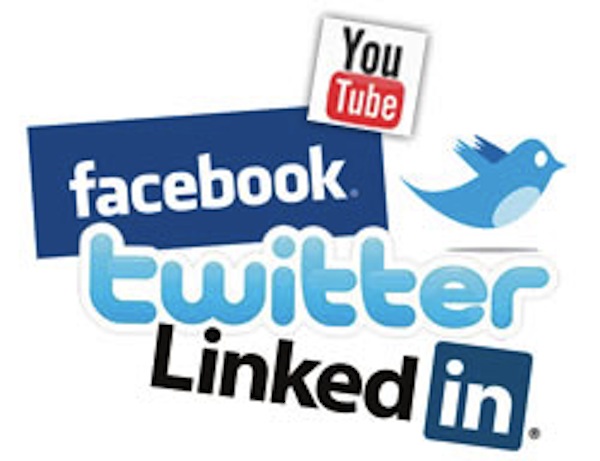
When companies are planning to advertise on the various social networks — Facebook, Twitter and LinkedIn — it is important for them to understand the differences among the platforms to ensure they’re getting the highest possible ROI, according to a new report from Wildfire, a social media marketing company.
Facebook is all about connections, as consumers spend much of their time on this platform engaging with friends, family and the brands they love most. Twitter is more about information and should be treated that way. It’s a great way to let people know what’s going on in your life — or behind the scenes at your organization. Finally, LinkedIn is all about profession and connecting with people for business purposes.
Each of the big three social platforms has different opportunities pertaining to advertising. Facebook’s best-performing ad units are sponsored stories, and Twitter’s are its promoted accounts, tweets and trends. On LinkedIn, it is all about the old-school display ads, which appear at the very bottom of the page or along the right-hand side.
“A new era in marketing is here, and the dividing line between what makes a good ad and what inspires user engagement has all but dissolved,” Wildfire writes in its report. “Going forward, an effective social ad strategy must pull in new fans and followers and also optimize for the types of users that want to engage with your brand for the long haul.”
Facebook
According to VentureBeat, U.S. consumers spend an average of six hours per month on Facebook. The social platform has more than 900 million active users per month, and that number is only growing. Not surprisingly, marketers are following. In fact, Facebook’s advertising revenue is expected to reach $5 billion globally by year-end. That means that Facebook will account for almost 7 percent of total online ad spend in 2012.
But Facebook is also a unique platform and needs to be treated that way. Users want to stay there, and anything that is going to take them away from the experience isn’t going to work. Ads on Facebook that take consumers out of the experience and to another site underperform when compared to ads that leave consumers on Facebook. Social ads on Facebook perform better as well, according to Wildfire. Response rates are higher on ads that tell a consumer how their friends interacted with that very same message — for example, something that says, “your friend liked this brand.” Wildfire also found that ads with images of people get higher click-through rates. Horizontal images (landscape mode) ensure you’re making the most of the ad space.
Twitter
Twitter is all about sharing information in real time. With 140 million monthly users, it is no wonder that advertisers are flocking to the platform. A promoted account on Twitter is featured in the search results and in the “who to follow” section, which aims to connect like-minded individuals.
“Use promoted tweets to extend your reach to a broader audience, and be in the right place at the right time,” the Wildfire report says. Promoting tweets in search isn’t the best-performing option on Twitter, though. Targeting the timeline is more effective, because it is natural for people to read through their chronological feeds. Promoted trends are another option that work best to drive awareness and buzz. For example, AMC bought the promoted trend “The Walking Dead” (#TheWalkingDead) to promote that show.
“You are likely to see higher numbers of qualified fans, i.e., those who are truly interested in your product or service, when you target to a geography where your product is available, rather than opening it up to regions where you don’t have a presence,” the report says. “If you don’t pay attention to geographic targeting when you set up your Twitter campaigns, you may inadvertently blow through your budget very quickly to produce low-quality results.”
Wildfire says that best practices for Twitter advertising are keeping the content fresh and engaging. Also, consider the mobile user. A whopping 55 percent of Twitter’s users are on mobile, and the platform is launching a mobile version of promoted tweets, which is sure to be a good thing for advertisers.
LinkedIn
LinkedIn has 150 million monthly active users who are looking to interact with customers and prospects, build positive brand awareness and drive revenue. Executives from all of the Fortune 500 companies are LinkedIn members, and more than 2 million companies have LinkedIn company pages. Imagery and branding are key with LinkedIn ads, according to Wildfire.
“Link your title and copy to your audience,” the Wildfire report says. “LinkedIn is job-related, so people identify heavily by profession and industry. Take advantage of this by creating ads and copy that are targeted by title (e.g., have the term CEO and co-founders in the title of the ad), as this calls out specific users and increases their likelihood of paying attention. On LinkedIn, like on Facebook, questions in the title can work well.”
One size does not fit all in social media. Each platform is different and has its own benefits. Marketers need to understand each platform before tailoring their creative and messaging.
More in Media

From sidelines to spotlight: Esports events are putting creators center stage
Esports events’ embrace of content creators reflects advertisers’ changing priorities across both gaming and the wider culture. In the past, marketers viewed esports as one of the best ways to reach gamers. In 2025, brands are instead prioritizing creators in their outreach to audiences across demographics and interest areas, including gaming.

Condé Nast and Hearst strike Amazon AI licensing deals for Rufus
Condé Nast and Hearst have joined the New York Times in signing a licensing deal with Amazon for its AI-powered shopping assistant Rufus.

Media Briefing: AI payouts may be entering a new era
AI compensation is evolving — and new models, not just publisher demands, are driving the shift beyond flat-fee licensing.





